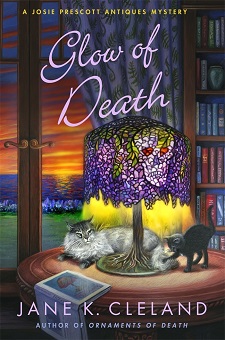April Smith’s historical mystery novel, based on a real crime, begins in 1985 when protagonist Jo Kusek, a landscape designer, arrives at a small-town South Dakota hospital where her brother Lance and his young son are in critical condition following a vicious home invasion that also killed Lance’s wife. Jo, who fled South Dakota for Oregon years earlier, is certain she knows the killer’s identity, and at times we suspect we do, too, as Smith leads us on a long, meandering journey from the novel’s present back to the 1950s.
There we see Jo’s parents, attorney Cal and social activist Betsy, meet in New York City during Senator Joe McCarthy’s rise to power. Betsy, partially because of her aversion to McCarthy’s House Un-American Activities Committee (HUAC) and her strong union leanings, was briefly a member of the Communist Party. After Cal helps Betsy and a friend out of legal difficulties, Betsy and Cal marry, have two children—Jo and Lance—and give up the New York rat race. Astoundingly, although neither of them has ever owned a cow, they move to South Dakota in the hopes of a more peaceful life raising cattle. Once there they make friends, but the liberal couple also makes enemies among the town’s solid Christian, born-in-America, “no Negroes” community. Their enemies emerge full-tilt when, after several more-or-less peaceful years of cattle raising, Cal runs for the US Senate and Betsy’s “pro-red” past is revealed. Almost overnight, the Kuseks become pariahs in the town they have grown to love. Years later, when Jo sits vigil at her dying brother’s bedside, she mentally replays those painful years, and vows to bring her family’s attacker to justice.
The mixture of red-baiting and cattle raising is an unusual one, and it is vibrantly effective during a scene where Cal Kusek helps brand his first calf. Attending the branding are a mixture of wealthy ranchers, rodeo riders, and teenage punks—as well as an elderly elephant trucked in by right-wing radio host Thaddeus Haynes. In a way, the portrayal of Haynes typifies some of the problems author Smith runs into in Home Sweet Home. Not content to let Haynes’ stunt with the elephant speak for itself, Smith gives us three solid pages of his whackadoodle radio rant. But after the first page of his rabid spouting, even the most inattentive reader will get the message that Haynes is totally, 100 percent, dyed-in-the-wool evil, not just crazy. Too many characters in the book are like Haynes: cartoonishly bad or unbelievably good. Such broad strokes forestall more delicately nuanced characterizations that could have helped Home Sweet Home achieve its lofty aim to shine a light on the ever-present dangers of racial, religious, and political prejudice.
Yet there is still a lot to learn here. By switching back and forth from the McCarthy era to the ’80s, the reader can see how times have changed. Speech and behavior that was acceptable in the ’50s are considered unacceptable by the ’80s. This gives rise to a weighty question that Home Sweet Home does not overtly ask but hints at: Are the rough lessons America learned from our past relevant in today’s sociopolitical atmosphere?

 Dramatic and disturbing, it will leave readers affected long after the last page is turned.
Dramatic and disturbing, it will leave readers affected long after the last page is turned.
 In this delightful early 20th-century romp, Alyssa Maxwell gives readers a great mystery replete with interesting facts and customs from the time period.
In this delightful early 20th-century romp, Alyssa Maxwell gives readers a great mystery replete with interesting facts and customs from the time period.
